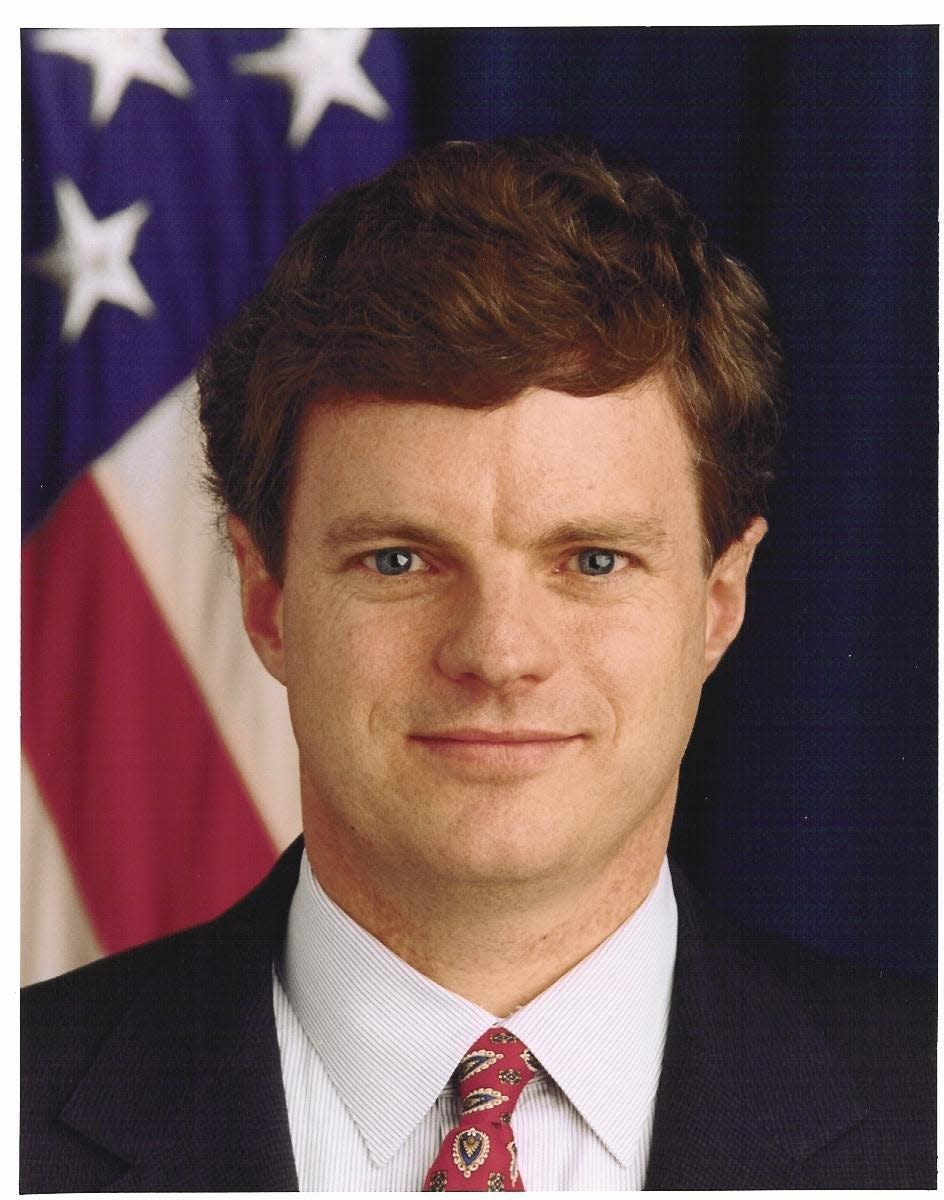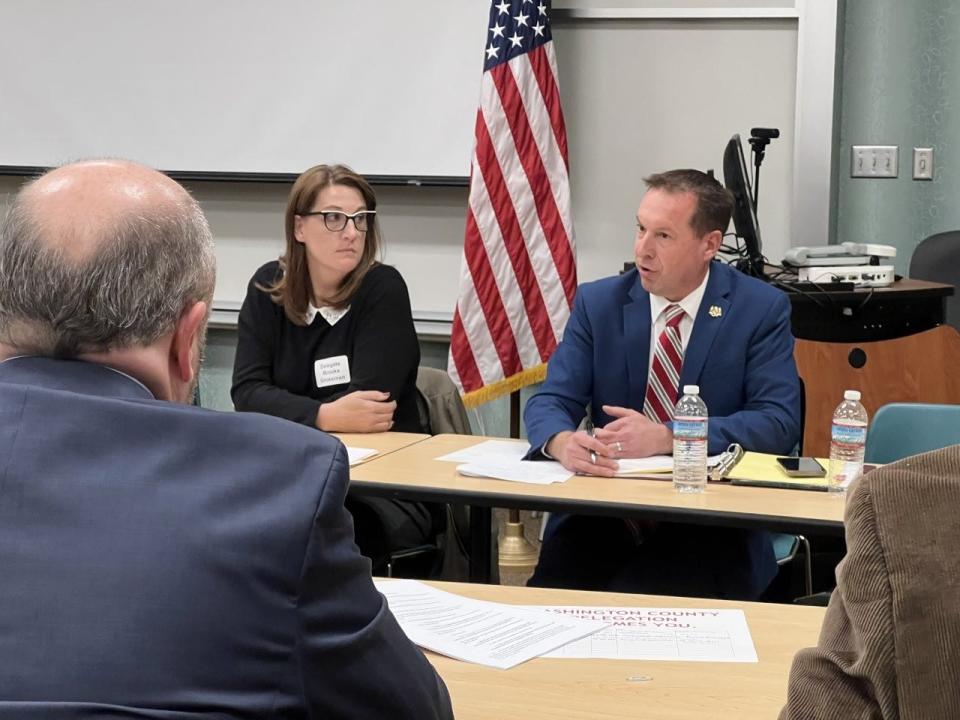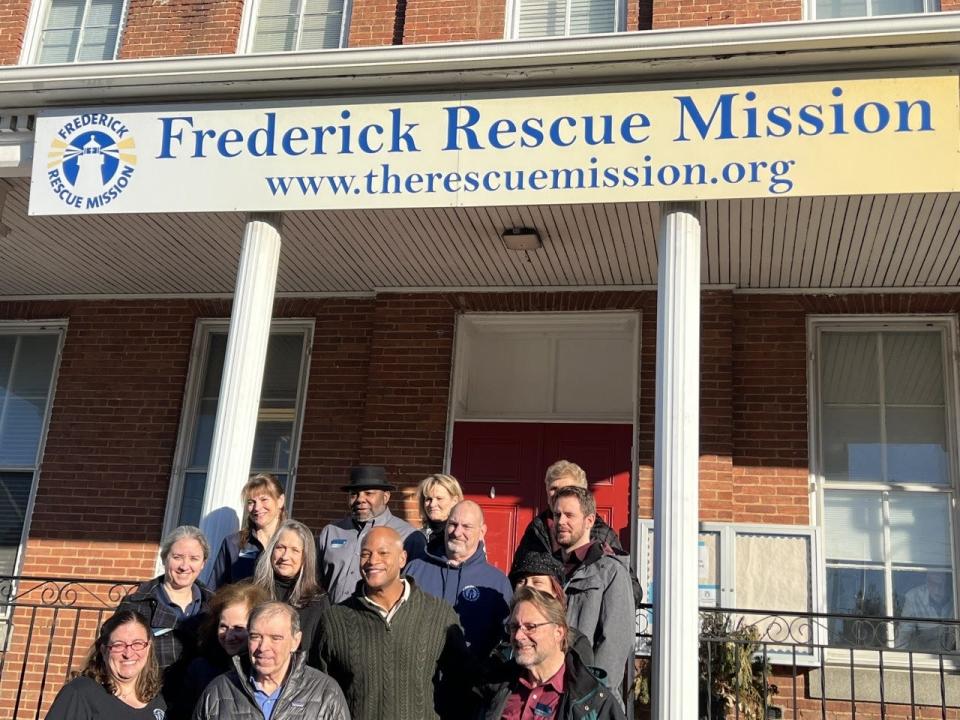Moore calls for gap service year after high school. What could it mean for Maryland?
- Oops!Something went wrong.Please try again later.
- Oops!Something went wrong.Please try again later.
Maryland’s new governor has over a dozen bills in the Legislature that have been introduced on behalf of his administration, including one, the Serve Act, that he hopes to be a hallmark of his tenure.
Even before Wes Moore’s election, the combat veteran talked about his idea for civic service.
“We are going to be the state that’s going to bring a service-year option for every single high-school graduate,” said Moore at an Aug. 25, 2022, rally in Rockville, where President Joe Biden kicked off the Democrats' midterm campaign.
In a phone interview earlier that day, two months before he even won the state’s governorship, Moore discussed on which topics he would act when in office and how he wanted to be remembered.
“You will see how experiential learning, how internships, how connectivity to young people,” the novice politician said, “I want that to be one of the hallmarks and legacy items for our administration.”
Earlier this month, the Democratic House Speaker Adrienne Jones introduced House Bill 0546, or Serving Every Region Through Vocational Exploration Act of 2023, by request of the nascent Moore administration. The bill, also known as the service year option program, had over half the chamber — 71 delegates — as co-sponsors, including a sprinkling of Republicans.
“This is something that should have been initiated many years ago,” said co-sponsor Del. Kevin Hornberger, R-Cecil. “I’m jealous that I didn’t come up with the idea.”
Why does the Serve Act sound familiar?
The idea of young people serving their state is not entirely novel. In 1993, a requirement of 75 hours of “service learning” became mandatory for Maryland high-school graduates. In 2016, during the administration of Republican Gov. Larry Hogan, Maryland Corps became a program to provide “meaningful service opportunities” to at least 100 participants to “address the social needs of the community.” The dormant program appears to be getting a wake-up call and an infusion of life from the Moore administration.
Moore’s second executive order established the Department of Service and Civic Innovation, creating a cabinet secretary position to oversee the service year option program.
“That’s a very strong institutional signal that it’s a priority,” said John Bridgeland, who led the civic service effort in the White House of Republican President George W. Bush.

The former director of USA Freedom Corps, who oversaw the expansion of civilian service positions and the growth of volunteerism after the terrorist attacks of Sept. 11, 2001, called what’s happening in Maryland “one of the more exciting developments in civilian national service I’ve seen since 9/11.”
Bridgeland, who now serves as vice chair of the nonprofit Service Year Alliance, also noted the “authenticity” of the backer of Maryland’s service year option program. In his late 20s, Moore left a career in finance and deployed to Afghanistan with the U.S. Army after the war commenced.
While the secretary of service has not yet been named, the Moore administration proposed $13.6 million in its budget bill for the new department, authorizing a maximum of 18 positions.
Real world learning in climate, education and health
The legislation lists climate, education and health as program focus areas for the service year option. At the national level, programs like the Civilian Conservation Corps and Teach for America have focused on similar topics. The state’s proposed program places participants with employers willing to pay $15 an hour for the high-school graduates’ service.
More:Brook Lane: Born of conscience, Hagerstown mental hospital lives on to heal others
“All employment sectors are struggling right now to find employees,” Hornberger, the bill sponsor from the Eastern Shore, said during a hallway interview in Annapolis. “We want to prepare young people for the real world.”
The participants are slated to receive mentoring, career and postsecondary education counseling, and financial literacy instruction in addition to participating in programwide events to build a professional network.
The bill calls for 200 participants in the first year and 2,000 in the fourth year, far short of providing the option to each of Maryland’s approximately 58,000 high school graduates as Moore called for during the campaign.
With the state disbursing a $3,000 stipend to participants upon the year’s completion, Bridgeland said the administration is being mindful of the appropriations process.
Hornberger said he anticipates the 200 slots will be “tremendously oversubscribed,” adding that even the fourth iteration of the program with 2,000 slots may be oversubscribed.
Will service year help young people/young adults stay in their communities?
For one bill co-sponsor, the legislation provides both an opportunity to those who are not yet on a college or career track and an opportunity for regions to retain their young people.
“In Western Maryland, and Washington County specifically, (we) have continued to see a rise in the number of what are called disconnected, or opportunity, youth in our community,” Del. Brooke Grossman, D-Washington, said in a phone interview.
Research from the early days of the Hogan administration showed about 1 in 10 youth, ages 16-24, neither working nor in school. Washington County had a rate closer to 1 in 5 (18.7%), a rate above the national average (14.2%).

Grossman, the chief mission officer for Horizon Goodwill in Hagerstown, called the program “another step” for disconnected youth still trying to figure out their path.
She also said the program could help reduce the frequency of young people leaving the community for opportunities and not returning.
“This (program) also creates an opportunity for them to stick and stay in Washington County,” said Grossman, a mom of six.
What will the ultimate results be from the Serve Act?
Two days before his inauguration, on the Martin Luther King Jr. National Day of Service, Moore said the service year option would bring the state closer together and make the state better.

More:On MLK Day, Moore promotes service year option, readies for governorship
Bridgeland, who has worked on the federal service program equivalent and has known Moore as an advocate for service since he returned from Afghanistan, sees promise and potential in the program.
“Maryland Corps can help heal a divided nation and a divided state,” he said. “Wes recognizes that, and he's trying to create something that will bring people together.”
Dwight A. Weingarten is an investigative reporter, covering the Maryland State House and state issues. He can be reached at dweingarten@gannett.com or on Twitter at @DwightWeingart2.
This article originally appeared on The Herald-Mail: Moore administration backs over a dozen bills, including Serve Act

